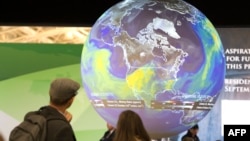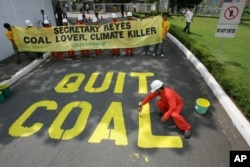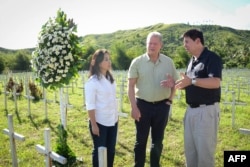The Philippines is one of the world’s most vulnerable countries when it comes to disasters and weather-related events. And this week it is hosting a three-day intensive seminar to help develop “climate leaders” who will be tasked to call attention to the impacts of climate change and what action can be taken.
Climate reality
From 1994 to 2013, the Philippines had 328 major weather events making it the worst-off country, according to data presented by former U.S. Vice President Al Gore, now the chairman of the Washington-based Climate Reality Project. Second on the list was Bangladesh, with 228 events.
Gore’s presentation in Manila made the connection between rising earth temperatures, powerful storms, extreme heat, more prolonged drought and their impact on food supplies, public health and political stability.
“I am constantly challenged in my own heart to realize the magnitude of these biblical changes that are going on right now,” he said.“ And we are the people alive in this day and time that have a responsibility to recognize it and then to act.”
Gore spoke Monday to the crowd of about 700 people in Manila, made up of public and private sector environmentalists, climate justice advocates and local media representatives.
Climate Reality CEO Ken Berlin said the goal is to get the Philippines started on its stated intention, made during the U.N. Conference of Parties summit (COP21) in December, to reduce 70 percent of greenhouse gas emissions by 2030.
“And we’ll be working to make sure that commitment is implemented, to build public support for the implementation of it.If there are new laws needed, we’ll work to get those laws through and build public support for that,” said Berlin.
Investing in renewable energy
Philippine Senator Loren Legarda, who has authored at least eight environmental laws, made a pitch for renewable energy. She asked why when the rest of the world was moving toward reducing coal powered generation (which causes significant carbon emissions), the Philippines was going in the opposite direction.
“The explanation given is anchored on simplistic assumptions: coal-fired power plants are the country’s dominant power technology because economically, they are widely available and easy to build. Easy and affordable defy durable solutions.”
Legarda said the country already had several laws supporting the renewable energy sector. She said renewable energy is about one third of the country’s power source, but the Philippines was still falling short of tapping its potential to generate 246,000 megawatts from those sources.
Power companies have said that the energy market in the Philippines is very competitive and there is still demand for cheap sources of electricity such as coal.
According to the World Resources Institute, public concern over high energy prices in a country that already has one of the highest costs in Asia has been a major stumbling block for renewable power generation.
Shifting from dirty fuel sources
On its website, the Philippine Energy Department promotes the country as having “vast potential for coal resources just awaiting full exploration and development to contribute to the attainment of the country's energy self- sufficiency program.”
Government incentives include exemption from all taxes except income tax and exemption from tariff duties and compensation tax for importing machinery and equipment needed for coal operations.
The energy department also promotes investments in renewable energies, but without as many tax and tariff incentives.
Legarda highlighted an energy efficiency bill that she intends to push in the next congressional session starting in July and urged the leaders in training to help keep such proposals in the public eye.
Rodne Galicha, branch manager of Climate Reality Philippines, said “climate leaders” in his country “need to walk the talk.” (Back up their words with actions)
“On top of adaptation strategies, loss and damage, climate negotiations, etc., we need really to, as well, shift from dirty fuel sources to renewable sources. We have a lot of renewable energy sources,” he said.
He said the country needs to stop subsidizing the fossil fuel industry and instead give more incentives for renewable energy.











